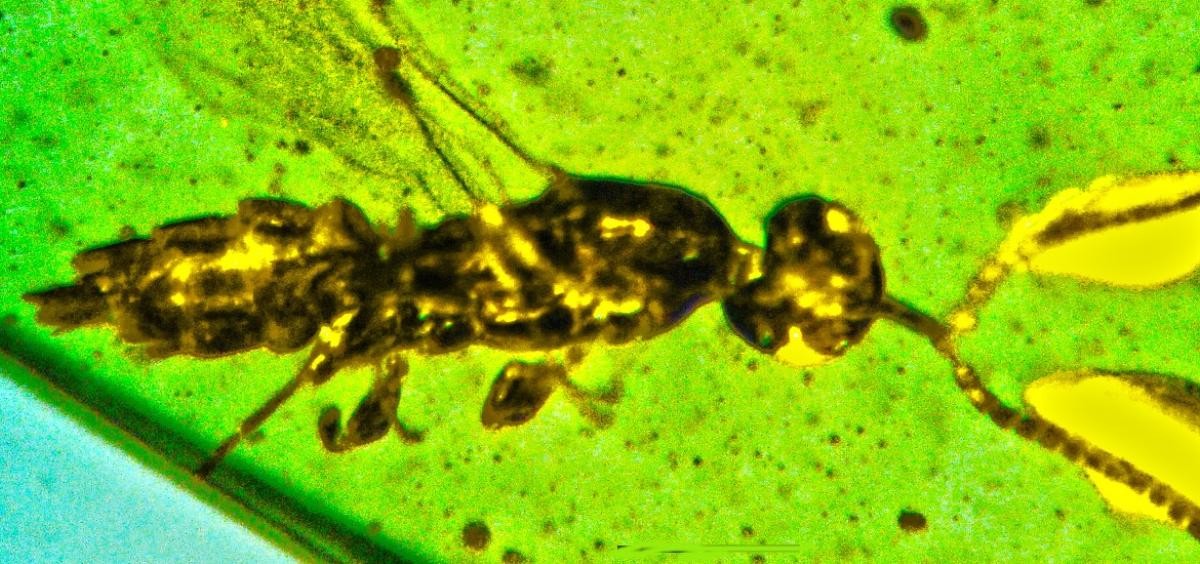
CORVALLIS, Ore. – Fossil researchers have discovered a novel genus and species of tiny wasp with a mysterious, bulbous structure at the end of each antenna.
The female micro-wasp was described from 100-million-year-old Burmese amber in a study led by George Poinar Jr., who holds a courtesy appointment in the Oregon State University College of Science.
Poinar and Fernando Vega, an independent researcher based in Silver Spring, Maryland, have some ideas about the “clouds” on the antennae, but they don’t know for sure what they are.
“We could find no fossil or extant insect with such antennal structures,” said Poinar, an international expert in using plant and animal life forms preserved in amber to learn about the biology and ecology of the distant past. “We wondered how it could still fly with that weight.”
Micro-wasps are defined as those with an adult body length of less than 2 millimeters. There are thousands of species of these parasitic insects around today, spread among hundreds of genera, Poinar said. Some are useful for controlling scale insects, which can be crop pests, he added.
“This micro-wasp has a length of only 1.3 millimeters,” Poinar said. “That, as well as its 15-segment antennae, a deep cleft in the center of its head and characters of the wings distinguish it from all other micro-wasps. The unique, miniature cloudlike structures stuck to the antennae must have certainly been an annoyance to this tiny parasite.”
Since the researchers could not find such structures on any other insect, current or extinct, they can only make educated guesses as to what they could be.
“They could be tiny plant seeds, plant secretions or eggs from a host the wasp was parasitizing,” Poinar said. “There is a good possibility the micro-wasp was parasitizing scale insects since there is a male scale insect embedded in the same piece of amber. Whatever they are, discovering these is one of the things that makes our work so interesting, and challenging: finding dominant, unique features on extinct organisms.”
The scientists named the new specimen Caradiophyodus saradae. The genus takes its name from the Greek words for head (kara) and cleft (diaphyodus), and the species name is a nod to fellow scientist Sarada Krishnan.
Findings were published in the journal Life.
About the OSU College of Science: As one of the largest academic units at OSU, the College of Science has seven departments and 12 pre-professional programs. It provides the basic science courses essential to the education of every OSU student, builds future leaders in science, and its faculty are international leaders in scientific research.
Steve Lundeberg, 541-737-4039
[email protected]
George Poinar Jr., [email protected]
[email protected]
Click photos to see a full-size version. Right click and save image to download.